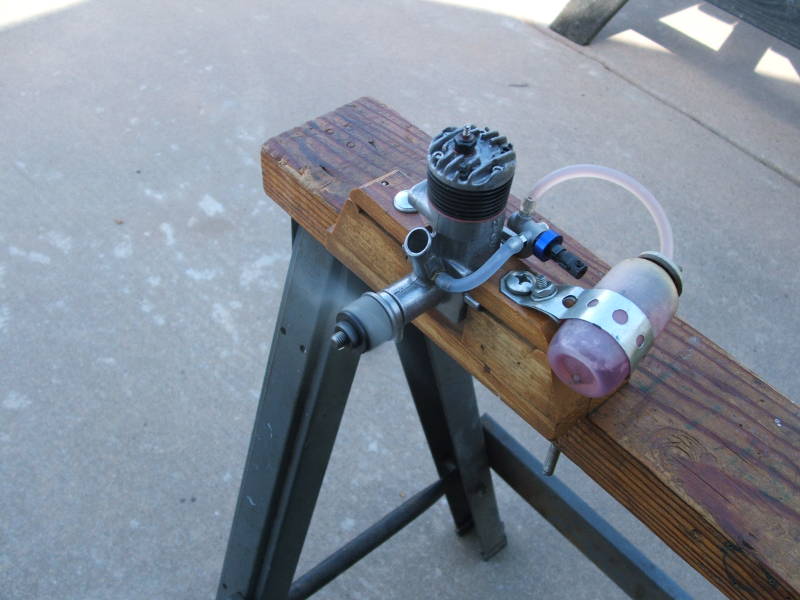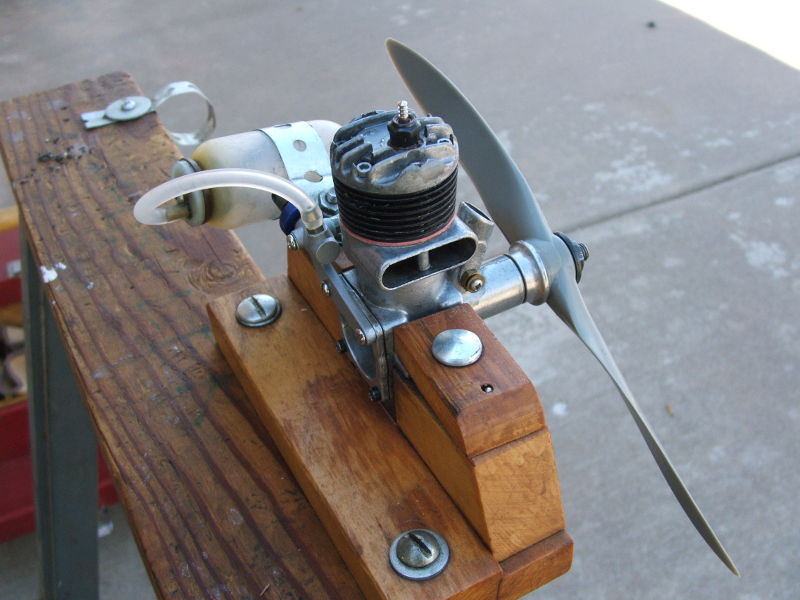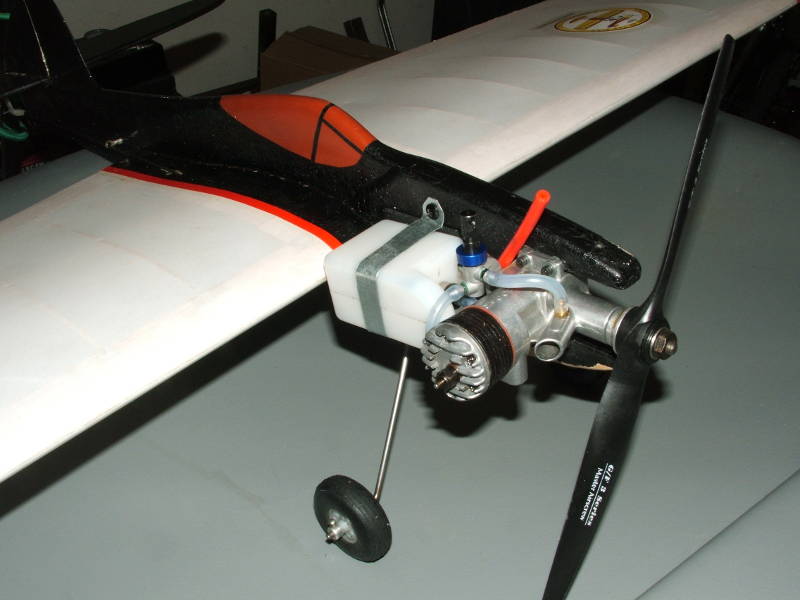Originally Posted by
sigrun
Actually, by O.S. convention hailing way back to the 1950s, the "S" suffix indicated "stunt" (C/L) being an understood. By the time of the appearance of the FP Schnuerled series of engines superseding the MAX series, C/L was arguably even past its Indian summer. O.S. continued to use the -S suffix, but by then to indicate the motor a C/L venturi and spraybar fitted circle turner. FP sans suffix fitted with an R/C carb was the "standard" FP. By then, the capacity range of C/L motors was already becoming restricted although .10 and .15 FP-S were still made.
Please note my comments are merely personal observations with my limited knowledge and am really enjoying this conversation, sigrun. My knowledge is limited to the historic engine model tests, majority performed by Peter Chinn and H.R. Warring on
http://www.sceptreflight.net/Model%20Engine%20Tests/ . In their articles, I thus observed not to see an "S" designation until the FP series, although it is possible. One advantage those in Australia have is being closer to the Orient, you probably have dibs on engines that aren't marketed in the US. Also it is possible that marketing differs from US. (When I worked in Japan, even car names were different. US Infinity G3 is Nissan Avenir, station wagon version is not available in US. I also found that BBC Australia news coverage on US was less biased and more informative than the US news agencies, LOL.) There are a lot of nice European engines, but IMO in US these are less seen due to their higher importation costs and availability back then.
As I recall they sleeved the.40FP down to .35 for the C/L version FP-S to fit with C/L capacity and class expectation, but the Schnuerled FP-S was never popular as a stunt motor with stunt fliers. Around this time I recall the .20 and .25 were consolidated and one or the other eliminated from the lineup. I can't recall which now. Eventually they were all superseded by the LA-S series for C/L and the line gradually rationalised. None of this was helped by R/C twin ballrace engines becoming so inexpensive relative to what they had been, that the only buyers for a PB .40 in R/C were beginners for their trainers. And of course, it wasn't long before even the .40in³ which had been the standard entry level for an aeon was superseded by the perception of a need for the .46 LA because of the success and reputation of O.S. .46 class in the TBR SF and subsequent FX.
Yes, better and more consistent fuel feed by a smaller neck venturi is done over here also. Aside from the traditionals favoring such as the venerable Foxes and I don't know about the popular end of CL flight in Australia. Here in US, current fliers consider the FP series favorable for stunt. A number favor the .25FP-S over the .25LA-S because of the metallic engine crankcase back versus the plastic one on the LA. LA is a wee touch less on power. With the right prop, tuning and setup (head shims for compression adjustment, venturi tweaking, etc.) they have been able to get the engines to do the familiar 4-2-4 break in stunts. A .20 - .25 Schneurle is substituted for the legacy .35 cross scavenge. Another engine that has a cult following is the K&B Sportster, referred to as the poor man's 4 cycle. Properly treated with the correct oil content (requires oil more than the modern ABC's due to is AAC (
Aluminium cylinder with an
Aluminium piston that is
Chrome plated, easily ruined by lean running on lower content oil) construction, which can turn larger props with ease. Of course there is a large crowd that swear by the venerable Fox .35 Stunt.
Aftermarket proprietary venturis for conversion to C/L can be had, at a price. For a beginner not understanding the importance fo adequate suction through manoeuvre and its relevance to inner diameter, unless from a source like Just Engines, it's a minefield. Yes, a wired open R/C carb can be used, with the caveats already mentioned. More weight and usually, less effective venturi area which can result in lower peak power. With contemporary Schnuered engines, the latter usually isn't an issue. NVAs are usually an easy fix. When I could source them, I used to use standard .10FP-S N/V on my .15FP-S' and even Fox 35 Stunt classic. Cheaper, lower profile more easily protected in a 'mishap' by a N/V protector, and finer tuning.
Yes, it is not a good feeling to snap off a needle aircraft noses over on landing and flips over. Some have been using Enya NVA's for their Foxes and McCoys. Actually here in US, venturi price is relative, not bad. I gather some that make these do them more out of a motive to help a fellow modeller than make a strong profit. Recently I found by accident an Evolution .40-.46 rear NVA was a perfect fit on my Testors McCoy .35 Red Head. The 25mm mounting pattern matches the McCoy's backplate bolt spacing. It's fine machine thread makes mixture adjustment a pleasure and gets my fingers away from the prop. Used a 2-56 screw to blank off the needle valve side of the OEM spray bar.



To the horrors of some, after engine clean up, I did not repaint the head "red" leaving it in plain metallic finish (for better cooling. I got comments that it didn't look right, LOL.

)
"Peacemaker" was a redesign of Flite Streak by George Aldrich for APS to accomodate British 2.5cc diesels of the day. It's still a fabulous design off the plan and well suited to any contemporary PB glow motor for sport aerobatics. "Smousen" (Modelhob) was designed later, and is better. They are .15 sport-pattern profile models which are capable of performing the pattern if built right and engined right in adequatelly skilled hands. "Akromaster" is similar, but for motors of lesser HP output. As already iterated sufficiently, it is MTOW weight critical which is its Achille's Heel as the builder has to save weight in either the build or motor choice. Because its airfoil is thin relative to the other two, other aerodynamic characteristics not withstanding, it is also faster if overpowered which doesn't compensate for a high wing loading once you start turning.
Yes, there are a lot of positive comments about the Peacemakers here. We don't see but occasional use of diesels. Diesels just never caught on in US, I gather by the low cost availability of nitro for glow.
"Flite Streak" was a great design in its day, and like "Peacemaker" still is. Sets the standard in class by which all others are judged. Flite Streak Jnr suffered by intention from the same thing which plagued Mike Gretz no doubt when he designed Akromaster. They both wanted a model which kids could afford and had an engine for which looked "just like a real Flite Streak". In the dominant US target market, that meant targeting the kid with a ubiquitous PB Fox 15, not exactly a powerhouse. Remember, back then motors weren't a virtual dime each as they are today post the Chinese market entry.
I am familiar with those days. Back then, I was elated when I bought a Testors McCoy .19 Red Head on clearance for $6 from America's Hobby Center, also was elated when ordering an OS Pet .06 non-R/C and Hobby Shack substituted an OS Max .10R/C since they were out of stock.
The above is a straw argument nonsense for the obvious sake of either intended ridicule or provocation which backfires for anyone with ½ a clue thinking about it. No-one said thinner sections can't fly well. As already iterated, the Akro's does. But having a thinner section gives a model certain characteristics encumbering it with restrictions or offering it advantages e.g. Goodyear, depending upon purpose. Like mathematics or physics, aerodynamics don't lie. They just are what they are. Either one understands it or one doesn't. That said, I'm sure the 'contest winners' did and built light and engined right to accomodate that section, just as I have been advocating the importance of with Akromaster. If the end user understands and implements that, s/he'll have a first rate flier on his hands. If he doesn't, he won't. I can't for the life of me understand exactly what it is that's difficult to comprehend about that when spelled out so clearly!???
Forums take on a life of their own here in US. Arguments about airfoil sections have been hotly debated as much as guns, knives and motorcycle oil in motorcycle forums, and we have our share of grumpy senior citizens, LOL.

In this case the skill of the pilot was the key element and used to counter such who insist on wing sections. There is merit to a thicker airfoil section, but professional tools in the hand of an amateur do not a professional make.
